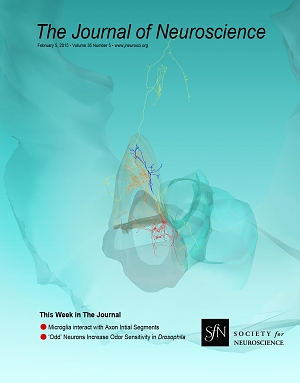The group of Marco Capogna, in collaboration with other Unit members and with the group of the ex-Unit member Francesco Ferraguti report in the Journal of Neuroscience 35 (5): 2044-2057, 2015 the organisation of a novel GABAergic neuron type of the rodent amygdala, the so-called large intercalated cell (L-ITCc). They identified them with juxtacellular recording/labelling in vivo.
L-ITCs are GABAergic, strongly express metabotropic glutamate receptor 1a, the GABA-A receptor a1 subunit and moderate levels of parvalbumin. Furthermore, L-ITCs are innervated by fibres enriched with metabotropic glutamate receptors 7a and/or 8a. In contrast to small-sized spiny ITCc, L-ITCc possess thick, highly-branched dendrites, and long-range axonal projections innervating interneurons in the basolateral amygdaloid complex. The axons of L-ITCs also project to distant brain areas such as the perirhinal, entorhinal and endopiriform cortices. In vivo recorded L-ITCc are strongly activated by noxious stimuli, such as hindpaw pinches or electrical foot-shocks, consistent with monosynaptic innervation shown from nociceptive intralaminar thalamic nuclei. The authors propose that, during salient sensory stimulation, L-ITCs disinhibit local and distant principal neurons, acting as “hub cells”, to orchestrate the activity of a distributed network.
